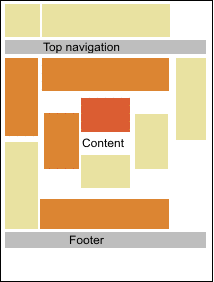Tuesday, May 17, 2005
Google AdSense for Feeds
Google is now offering Google AdSense ads for RSS feeds of blogs and such. You can apply to participate in the public beta. This is what the help page states, verifying recent rumors:
“We’re currently beta testing AdSense for feeds, a program that allows you to monetize your feeds through contextually targeted advertising.
AdSense for feeds works the way the rest of the AdSense program works, delivering ads that are so relevant to the content that readers find them useful. And when people click on these ads, Google pays you.”
I’ve applied with my regular AdSense email and will see how this works out. (I’m not supplying a full-content RSS feed, so if I include ads for a week or so it will simply be a test balloon to try out the service.)
It’s interesting to note that many people I’ve heard talking about what they like best about RSS is that it contains no ads. If RSS advertisement would ever become popular, this bonus would of course diminish – and possibly, attack the substance of RSS. The official Google Blog puts it a different way: “As with many promising technologies feeds havent quite hit the mainstream yet, nor are the business models entirely sorted out.” (Note the usage of the word “feeds” as opposed to “RSS” to avoid the Atom vs RSS debate – Google placed their bets on the more exotic Atom a while ago.)
AdSense Optimization
On a related note, Google now has an AdSense optimization tips page up for you. (It’s in tiny print – this makes almost any top ten web design errors list – so I suggest if in Firefox, you press Ctrl+Plus several times.)

Google shows off a “heat map” with successful (dark orange) and less successful (light yellow) parts. The most successful part is right in the middle where your content is, followed by left, top, and footer placement close to your content; the very top and very bottom is not successful, neither is the right-hand side of your content. Also, Google says:
“As a rule of thumb, wider ad formats tend to outperform their taller counterparts. The reader-friendly format has a lot to do with this. Readers absorb information in thought units (that is, several words at a time). The wider format lets them comfortably read more text at a glance without having to skip a line and return to the left margin every few words as they would be forced to do with a narrower ad. The wider ad format also lessens the likelihood of readers leaving the ad unit altogether.”
As for colors, Google says “you may find that colors that blend in completely perform better.” You can sum up this and all the other tips to a more general rule of thumb: “make the ads look as much like normal content as possible.” Whether or not this benefits your readers is another issue – publishers who think about their readers first may prefer a strong separation between content and advertisement in order to make the content stand out, and to not confuse readers.
>> More posts
Advertisement
This site unofficially covers Google™ and more with some rights reserved. Join our forum!
